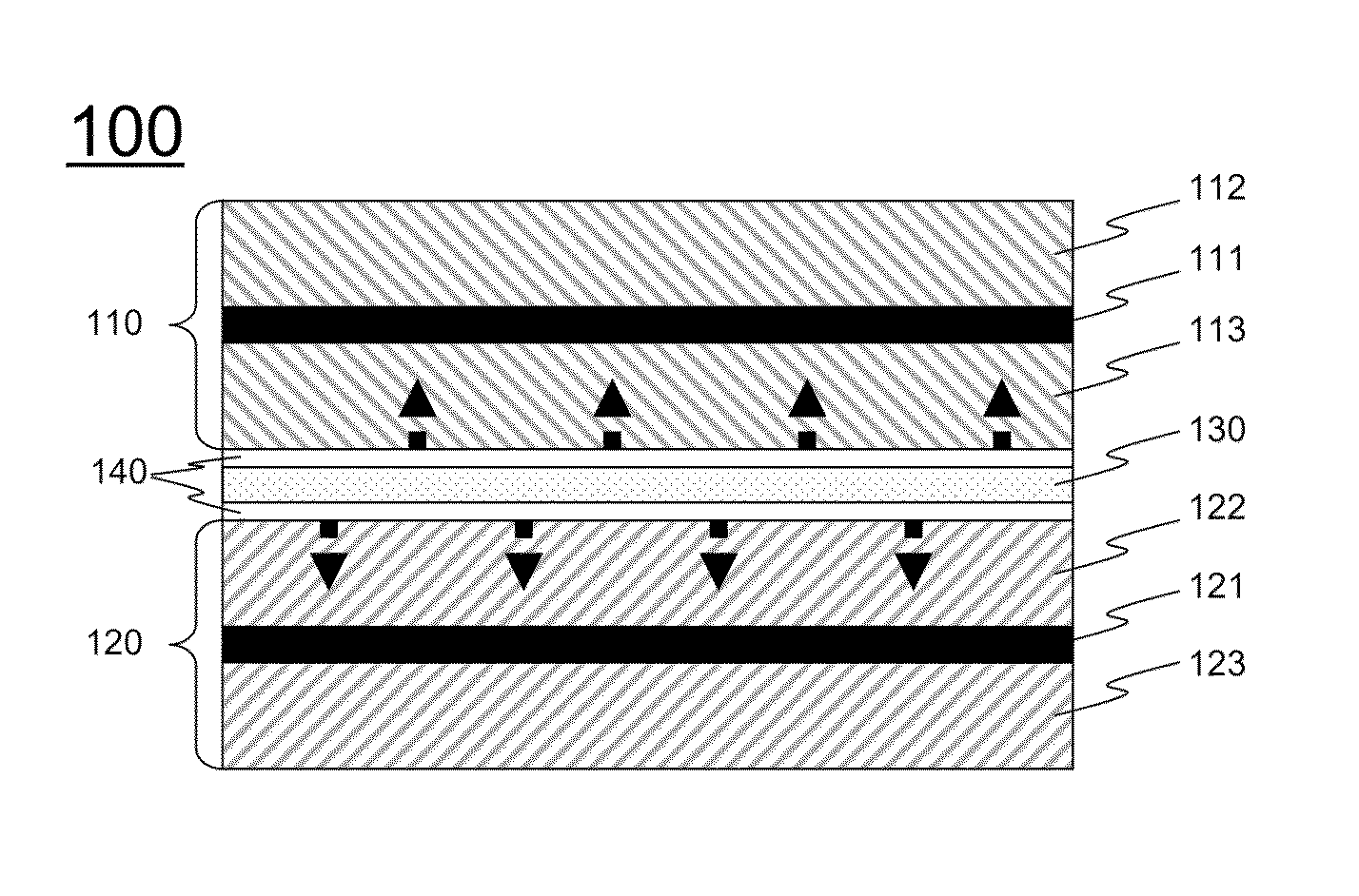Electrode assembly having novel structure and secondary battery using the same
a technology of secondary batteries and electrolyte assemblies, which is applied in the direction of non-aqueous electrolyte cells, cell components, sustainable manufacturing/processing, etc., can solve the problems of inevitably occurring contraction of generally used stretching separators, low energy density of materials for enhancing safety, and insufficient fundamentally addressing safety problems
- Summary
- Abstract
- Description
- Claims
- Application Information
AI Technical Summary
Benefits of technology
Problems solved by technology
Method used
Image
Examples
example 1
[0086]An anode was fabricated by coating a Cu foil with a slurry prepared by adding graphite, PVdF, and carbon black to NMP and drying the coated Cu foil at about 130° C. for 2 hours. A cathode was fabricated by coating an Al foil with a slurry prepared by adding LiNiMnCoO2 / LiMnO2, PVdF, and carbon black to NMP and drying the coated Al foil at about 130° C. for 2 hours.
[0087]A two-phase electrolyte layer and a three-phase electrolyte layer were prepared so as to have composition ratios shown in Table 1 below, and benzoin, which is a UV initiator, was added in an amount of 3 wt % based on the amount of PEGDMA.
TABLE 1Organic electrolyte solution(1M LiPF6, EC / DEC = 1 / 1)PEOPEGDMASiO2Two-phase502525—electrolyte layerThree-phase83.77.47.41.5electrolyte layer
[0088]A two-phase electrolyte was coated on surfaces of the prepared cathode and anode, followed by polymer cross-linking through UV irradiation, to form a polymer electrolyte layer having a viscoelastic structure. Thereafter, a three-...
experimental example 1
[0090]Characteristics of the secondary battery manufactured according to Example 1 were evaluated without performing a separate impregnation process.
[0091]The secondary battery of Example 1 was charged at a current density of 0.1 C and a constant current (CC) until voltage reached 4.2 V and maintained at a constant voltage (CV) of 4.2 V and, when current density reached 0.05 C, the charging process was completed. In addition, the secondary battery of Example 1 was discharged at a current density of 0.1 C and a CC until voltage reached 2.5 V. Charging and discharging cycles were repeated by 50 times under the same conditions.
[0092]A discharge profile of the secondary battery of Example 1 exhibited excellent discharge characteristics and high capacity although a separate electrolyte solution was not added and a separate impregnation process was not implemented.
[0093]A first charge-discharge profile and cycle lifespan characteristics of the secondary battery of Example 1 are shown in F...
experimental example 2
[0094]Characteristics of the secondary batteries of Example 1 and Comparative Example 1 were evaluated without separation impregnation. Discharge capacity in a first charge / discharge cycle of each secondary battery is shown in Table 2 below.
TABLE 2Capacity with respect to1st discharge capacitytheoretical capacity (17 mAh)Example 116.5 mAh97.0%Comparative15.5 mAh91.2%Example 1
[0095]Table 2 shows evaluation results of charge / discharge characteristics of the secondary batteries of Example 1 and Comparative Example 1 without performing impregnation of the electrolyte solution. From the results shown in Table 2, it can be confirmed that the secondary battery of Example 1 exhibited higher 1st discharge capacity than that of the secondary battery of Comparative Example 1 and high capacity with respect to theoretical capacity (17 mAh).
PUM
| Property | Measurement | Unit |
|---|---|---|
| particle diameter | aaaaa | aaaaa |
| thickness | aaaaa | aaaaa |
| constant voltage | aaaaa | aaaaa |
Abstract
Description
Claims
Application Information
 Login to View More
Login to View More - R&D
- Intellectual Property
- Life Sciences
- Materials
- Tech Scout
- Unparalleled Data Quality
- Higher Quality Content
- 60% Fewer Hallucinations
Browse by: Latest US Patents, China's latest patents, Technical Efficacy Thesaurus, Application Domain, Technology Topic, Popular Technical Reports.
© 2025 PatSnap. All rights reserved.Legal|Privacy policy|Modern Slavery Act Transparency Statement|Sitemap|About US| Contact US: help@patsnap.com



